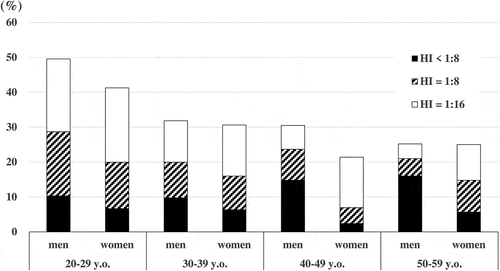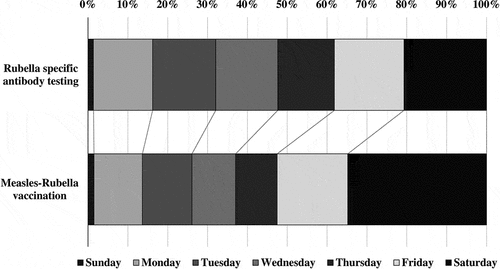Figures & data
Table 1. History of the national immunization program for rubella in Japan
Table 2. Epidemiology in Japan and Chiba city and comparison of the nationwide campaign and Chiba city campaign
Table 3. Seroprevalence of rubella-specific antibodies from the nationwide campaign data
Table 4. Seroprevalence of rubella-specific antibodies from the Chiba city campaign data classified according to sex and age
Figure 1. The seronegative proportions from both campaigns evaluated at three different titer cutoff values and stratified based on age and sex

Table 5. Number of people who had received the measles-rubella vaccine in the nationwide campaign and the vaccination rate of the total population of the target ages in Chiba city
Table 6. Number of people who had received the measles-rubella vaccine during the Chiba city campaign classified according to sex and age
Figure 2. The percentage of participants in the nationwide campaign who visited medical facilities on each day of the week

